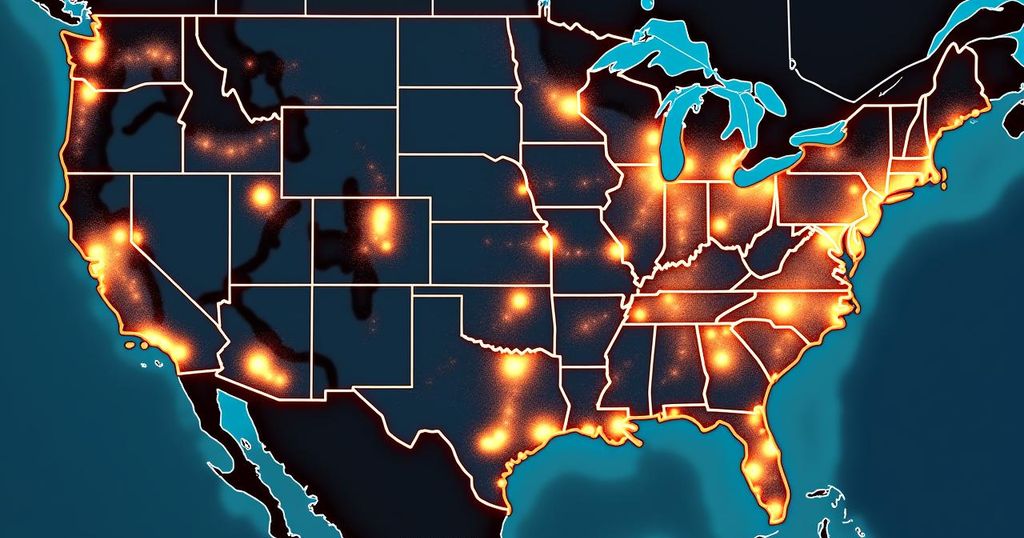Hurricane Helene: An Unprecedented Disaster Across Six States
Hurricane Helene left a devastating mark across six states, causing over 230 fatalities, extensive flooding, and monumental damage due to its extraordinary size, storm surge, and rainfall. It was notably the deadliest inland hurricane on record, emphasizing the need for a comprehensive understanding of hurricane risks in a warming world.
Hurricane Helene is remembered as a catastrophic storm that wreaked havoc across six states, primarily affecting Florida, Georgia, South Carolina, North Carolina, Tennessee, and Virginia. This hurricane was a unique combination of intense winds, significant storm surge, and unprecedented rainfall. Its immense size allowed it to impact areas more than 500 miles inland, resulting in at least 230 fatalities. The storm surge led to severe coastal damage in Florida while the heavy rainfall inundated towns, caving in roadways, displacing thousands, and uprooting homes. Residents began their recovery efforts even as the threat of another hurricane loomed. Helene’s torrential rains reached mountainous regions, causing rivers to overflow drastically, marking it as the deadliest inland hurricane on record, surpassing previous storms like Hurricane Agnes in 1972. Meteorological assessments revealed that Helene’s winds, despite its Category 4 classification, had devastating effects in regions unaccustomed to such fierceness. Helene also flaunted a near-record storm surge, peaking at approximately 15 feet in some areas. The storm’s rain was particularly severe in the southern Blue Ridge Mountains, where orographic processes resulted in intense precipitation and flooding. This disaster serves as a stark reminder of the evolving risks posed by hurricanes in a changing climate, highlighting that their destructive potential cannot simply be gauged by wind speeds alone.
Hurricane Helene became a significant event in meteorological history, showcasing the immense threat posed by hurricanes that combine various destructive elements. Unlike hurricanes commonly remembered for either wind damage or flooding, Helene’s catastrophic impact stemmed from a confluence of factors including its vast size, powerful winds, extensive rainfall, and accompanying storm surge. This event emphasizes the evolving nature of hurricanes and their impacts on inland areas, especially in regions not typically accustomed to such severe weather events. The analysis of Helene assists in understanding the potential future trajectories of hurricanes in a warming climate.
The disastrous legacy of Hurricane Helene underscores the imperative for enhanced awareness regarding hurricane risks, especially in light of a changing climate where both wind intensity and precipitation can lead to unprecedented destruction. As demonstrated by Helene’s impact, it is essential to recognize that the scale of a storm’s damage cannot be encapsulated by a singular metric of wind speed. Rather, the amalgamation of its storm surge, rainfall, and the geography of affected areas must be considered to appropriately gauge the potential consequences of future hurricanes.
Original Source: theconversation.com




Post Comment